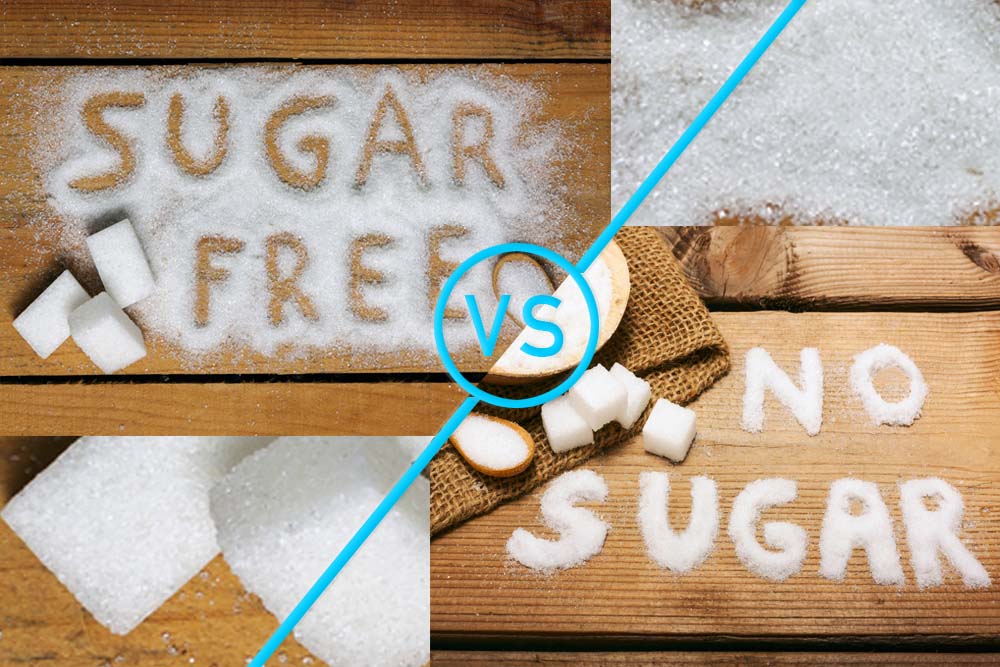Blog, Sugar Series
Sugar-Free vs. No Sugar Added: Which is Better?
You’ve likely heard about the debate on sugar and how much sugar is too much. It’s estimated that two-thirds of global consumers worry about their sugar intake. Nearly everything you eat contains some level of sugar, and sugar provides fuel for your body and other potential health benefits. In many cases, it tends to taste better than sugar-free products, too.
So, what’s the difference between sugar-free and no sugar added? Is one better for you than the other? In this guide, you’ll learn about the differences between sugar-free vs. no sugar added to help you make informed decisions on your diet when choosing between these products.
Sugar-Free vs. No Sugar Added: What’s the Difference?
The first step in deciding between no sugar added vs. sugar-free is understanding the difference between the two. It’s a common misconception that sugar-free and no sugar added mean the same thing, but that’s not the case. According to the American Heart Association, key differences between these products are:
- Sugar-Free: Sugar-free products contain less than 0.5 grams of natural or added sugars.
- No Sugar Added: No sugar added products contain naturally occurring sugar but do not have any added sugars during packaging or processing of the product.
Additionally, some products are labeled as reduced sugar, which means they contain at least 25 percent less sugar than their regular version counterparts. However, if the standard version of a product is high in sugar, the reduced sugar product may still contain excessive amounts of sugar.
Sugar isn’t necessarily a bad thing, either. One form of sugar is glucose, an essential energy source for cells within your body. According to the Harvard Medical School, glucose is closely linked to brain functions like learning, memory, and thinking. Certain types of sugar, like sugarcane, may even provide health benefits such as disease prevention, better kidney function, and reduced morning sickness.
There are many reasons that sugar is used in food. First, sugar occurs naturally in many types of foods. Additionally, sugar is often added to processed foods because it generally makes food taste better, adds texture to food, and can help preserve foods longer.
Other Sugar Content Claims
While there may be some benefits to consuming sugar, too much of anything can be a bad thing. According to the Centers for Disease Control and Prevention, Americans consume too much sugar, which can increase the risk of weight gain and several chronic health problems. The average consumption of added sugar is about 17 teaspoons in adults. That’s exceedingly high, as the American Heart Association recommends that men consume no more than nine teaspoons and women consume no more than six teaspoons of sugar each day. What’s more, it can be challenging to step away from foods high in sugar, as some consumers may be addicted to sugar.
You can reduce the amount of sugar you’re consuming by taking steps like:
- Choosing foods that include less and natural sugars, such as fruit over cookies or pastries
- Being mindful of condiments that are high in sugar, such as barbecue sauce and ketchup
- Reading food labels before making a purchase and avoiding foods that are high in sugar
- Choosing no sugar added or sugar free products
- Avoid sugar-sweetened beverages and drink more water
- Cut back on the amount of sugar you use when cooking or baking
How to Choose Between Sugar-Free and No Sugar Added
While it’s a generally understood that Americans should consume less sugar, choosing between sugar free vs. no sugar added comes down to personal choice. Sugar-free products, like Seattle Gummy Mocca Shots Sugar-Free, contain less sugar, but no sugar added products still have less sugar than their standard counterparts.
Some factors that may influence your decision include:
- Current Health Conditions: Some illnesses are sensitive to sugar intake. Suppose you currently have one of these conditions or are at risk of developing one. In that case, it’s essential to consider that when choosing between no sugar added vs. sugar-free.
- The Importance of Taste and Texture: How important is taste and texture to you? If it is important, you may prefer the taste of no sugar added products over sugar-free.
- Your Diet: Some diets focus on limiting sugars. In this case, you may prefer sugar-free over no sugar added products.
The Bottom Line
When choosing between no sugar added vs. sugar-free, it’s essential to understand what these product labels mean. While sugar isn’t inherently bad for you, excess sugar can be detrimental to your health and may factor into the development or worsening of certain health conditions. Unfortunately, many Americans are consuming too much sugar each day, but sugar-free and no sugar added products can help you reduce how much sugar you’re consuming. Additionally, making healthier diet decisions can help reduce sugar intake and help you to live a healthier, happier life.

